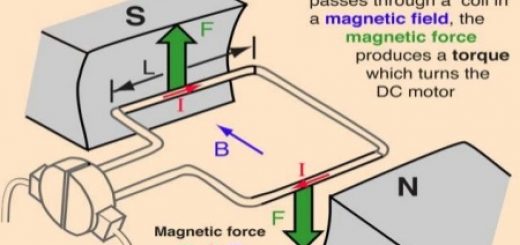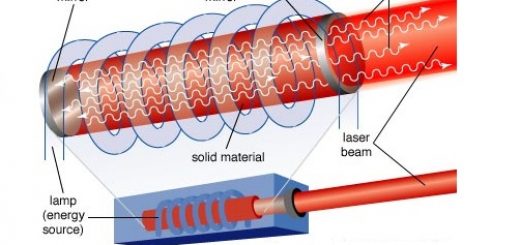Resistances connection (series and parallel), Electric energy and Electric power
Electric resistances can be connected in the electric circuit using two methods which are series connection, parallel connection, Home appliances are connected in parallel, Thus every device can work individually on the potential difference of the source & does not affect the other devices when switched off or at mal-function, also their equivalent resistance becomes very small & does not weaken the current intensity.
Resistors connection in series
Its purpose: Obtaining big resistance from a group of small resistance where the resistance is considered as a connected path of the electric current.
Method of connection: The electric resistors are connected to a battery, ammeter, voltmeter, rheostat and a switch in an electric circuit.
The electric current intensity: When measuring the electric current intensity passing in all resistors we find it equal.
I = I1 = I2 = I3
Electric potential difference
When measuring the potential difference between the ends of each resistor, we find that the total voltage equals the sum of potential differences on all the resistors in the circuit.
V = V1 = V 2 = V3
Calculating the equivalent resistance (R‾):
From Ohm’s law: V = I R
∴ V1 = I R1 , V2 = I R2 , V3 = I R3
V = V1 = V 2 = V3
∴ I R‾ = I R1 = I R2 = I R3
R‾ = R1 + R2 + R3
That means that the equivalent resistance for a group of resistors equals the sum of these resistances, If the resistors connected in series have the same resistance and its number N then:
R‾ = NR
Resistors connection in parallel
Its purpose: Obtaining a small resistance from a group of big resistors where the equivalent resistance is less than the smallest resistance in the group.
Method of connection: The electric resistors are connected to a battery, ammeter, voltmeter, rheostat, and switch in an electric circuit.
Electric potential difference: When measuring the potential difference between the ends of each resistor, we find it equal and equals the potential difference between the terminals of the battery:
V = V1 = V 2 = V3
The electric current intensity: When measuring the electric current intensity passing in each resistor, we find that the total current equals the sum of the current intensities passing in all the resistors:
Itotal = I1 + I2 + I3
It is noticed that the electric current is inversely divided on the resistors such that the biggest part of the current passes in the smallest resistor.
Calculating the equivalent resistance (R‾):
From Ohm’s law: V = IR
∴ I1 = V / R1 , I2 = V / R2 , I3 = V / R3
Itotal = I1 + I2 + I3
∴ V / R‾ = V / R1 + V / R2 + V / R3
∴ 1 / R‾ = 1 / R1 + 1 / R2 + 1 / R3
That means that the reciprocal of the equivalent resistance for a group of resistors connected in parallel equals the sum of reciprocals of the resistances.
In case of only 2 resistors connected in parallel: R‾ = R1 R2 / ( R1 + R2 )
If the resistors connected in parallel are all equal and each of value R and their number N, then:
1 / R‾ = N / R
∴ R‾ = R / N
In the electric circuit connected in parallel thick wires are used at the terminals of the battery, Because the current intensity becomes maximum at the terminals of the battery, thus thick wires are used due to their small resistance which does not affect the intensity of the electric current, but in the other parts of the circuit, the current divides into smaller currents where thinner wires are used.
Electric current intensity of the branch ab:
R‾ = R1 R2 / (R1 + R2)
V1 = V 2 = Vab
I1 R1 = I2 R2 = I R‾
In case that terminals of a resistor are connected together with a conducting wire, its value is ignored when calculating the equivalent resistance because there is no potential difference between its terminals, In case of presence of a connecting wire of no resistance, its ends can be considered one point, In case of equal potential at the terminals of a resistor, then the value of this resistor is neglected when calculating the equivalent resistance.
The electric energy (W)
When the electric current passes in a conductor, part of the electric energy is consumed.
V = W / Q , ∴ W = V Q
Where: (W) is the work done and represents electric energy.
The consumed electric energy is measured in Joule and it is equivalent to Volt.Coulomb.
W = V Q
∴ W = V I t = I² R t = V² t / R
The electric power (Pw)
The electric power (Pw) is the consumed electric energy within one second, The electric power is measured in Watt which is equivalent to Joule/sec.
Pw = W / t = V I = I² R = V² / R
To compare between the consumed power in two connected resistors:
In series: Electric current intensity in both of them is the same.
( Pw )1 / ( Pw ) 2 = ( I² R1 / I² R2 ) = R1 / R2
( Pw )1 / ( Pw ) 2 = R1 / R2
In parallel: Electric potential difference at both of them is the same.
( Pw )1 / ( Pw ) 2 = ( V² / R1 ) × ( R2 / V² ) = R2 / R1
( Pw )1 / ( Pw ) 2 = R2 / R1
Electrical current, Potential difference, Electric resistance and Ohm’s law



